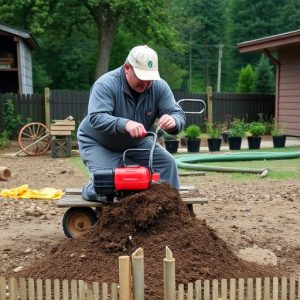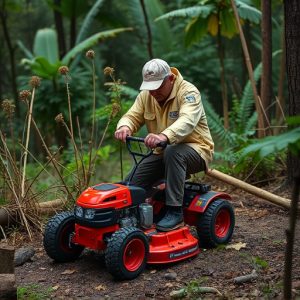Mastering Self-Defense with a Kubotan: Techniques and Integration into Martial Arts
The Kubotan is a discrete self-defense tool derived from Filipino martial arts like Eskrima and Kali…….
The Kubotan is a discrete self-defense tool derived from Filipino martial arts like Eskrima and Kali. It's a short, thick stick with one end capped, used to enhance hand striking skills and serves as an extension of the hand. Training in its use involves mastering ancestral techniques and practical applications, integrating it into various stances and movements for offensive and defensive maneuvers. The Kubotan allows for precise strikes, pressure point manipulation, and control tactics, and is effective due to its ability to incapacitate with minimal force. It's a versatile tool that combines traditional striking with advanced control tactics, offering a comprehensive self-defense system. Mastery requires understanding grip, angle, and force for each technique and involves leveraging the weapon's mechanics for real-world applications. For those interested in how to use a Kubotan, it's important to commit to a thorough understanding of its mechanisms, human anatomy, and biomechanics through regular practice, ensuring proficiency in using the tool safely and effectively in self-defense scenarios. Advanced training includes drills that simulate real confrontations, refining the integration of the Kubotan with traditional martial arts techniques for a tactical and adaptable defense strategy.
Discover the art of self-defense with an intimate exploration of the Kubotan fighting system. This article delves into the origins, techniques, and advanced strategies of this potent self-defense tool. From understanding “how to use a kubotan” for basic strikes and blocks to mastering holding tactics and integrating it into your martial arts practice, learn how this simple yet effective weapon can enhance your personal safety and martial arts skills. Uncover the secrets of Kubotan training in our comprehensive guide.
Mastering the Kubotan: An Overview of Its Origins and Techniques
The Kubotan is a versatile and effective self-defense tool that has its roots in the Filipino martial arts, particularly within the Eskrima and Kali systems. Its origins trace back to these ancient fighting traditions, which emphasized the use of sticks and blades for combat. Today, the Kubotan is a short, thick stick with a cap on one end, designed to be used as an extension of the hand and a tool for learning precise striking techniques. Mastering the Kubotan requires a deep understanding of its origins and an in-depth study of its application. Practitioners learn how to use a Kubotan by integrating it into various stances and movements, which are aimed at disarming opponents or neutralizing threats through precise strikes, pressure points, and control techniques.
The techniques associated with the Kubotan are multifaceted, incorporating both offensive and defensive maneuvers that leverage the weapon’s potential to its fullest. Training involves learning to wield the Kubotan in ways that mimic empty-hand techniques, allowing for a seamless transition between armed and unarmed combat scenarios. The use of the Kubotan is not limited to striking; it can also be used to control an opponent’s limbs or weapon, making it a valuable tool in self-defense situations. Mastery of the Kubotan extends beyond mere physical manipulation; it requires an understanding of the proper grip, angle, and force needed for each technique. This intricate martial art form combines traditional strikes with advanced control tactics, offering practitioners a comprehensive self-defense system that is both dynamic and adaptable to various confrontational scenarios.
The Mechanics of Self-Defense with a Kubotan: Strikes, Blocks, and Holding Tactics
When learning the intricacies of self-defense with a Kubotan, understanding its mechanics is paramount. This tactical tool, designed by Master Juhan Hakki in the 1960s, is a short, key-like device that can be used to deliver precise and controlled strikes or to enhance traditional hand techniques for greater impact. The Kubotan’s design allows for a range of applications: it can be wielded as an extension of the hand or finger, enabling users to apply pressure points with precision without the risk of injury from overextension. Striking with a Kubotan involves targeting vital areas of an assailant, such as the eyes, nose, and groin, where even minimal force can be highly effective. Practitioners learn to execute strikes with intention, using the Kubotan’s weight and leverage to maximize the efficiency of each movement.
In addition to striking, proficiency in blocking and holding tactics is essential when mastering the Kubotan. Effective blocks with the Kubotan can redirect incoming attacks, offering protection while maintaining a defensive stance. The tool can be employed to control an attacker’s limbs, disrupting their balance and incapacitating them. Holding techniques are also a critical component of self-defense with a Kubotan. When an adversary grabs hold, the Kubotan can be used to lock joints or apply pressure in such a way that can break holds without causing permanent harm. These holding tactics, combined with strikes and blocks, create a comprehensive self-defense system that empowers users with a versatile tool for personal safety. Mastery of these mechanics requires consistent practice and understanding of the principles behind each technique to effectively utilize the Kubotan in real-life confrontations. How to use a Kubotan effectively involves a combination of precision, control, and knowledge of anatomy and biomechanics to neutralize threats safely and efficiently.
Advanced Strategies in Kubotan Training: Integration into Martial Arts and Sparring Practice
The Kubotan is a versatile and effective self-defense tool that has been integrated into various martial arts for enhanced training and combat effectiveness. Practitioners who seek to master the art of Kubotan can incorporate this training into their sparring practice, which not only sharpens their skills but also teaches them how to use a kubotan in dynamic and unpredictable environments. Advanced strategies in Kubotan training involve understanding the mechanics of the tool and its application within the context of martial arts techniques. This includes learning to control the angle and pressure applied, which can neutralize an opponent or defend against attacks. The integration of the Kubotan into sparring practice requires a deep understanding of timing, distance, and the flow of movement. It is crucial for practitioners to familiarize themselves with a variety of strikes and grips that the Kubotan enables, such as disarms, joint locks, and strikes to vital points, all while maintaining situational awareness and adapting to an opponent’s tactics. By incorporating drills that simulate real-life encounters, martial artists can effectively practice how to use a kubotan in conjunction with traditional striking and grappling techniques, thereby creating a comprehensive self-defense skill set. The Kubotan training thus becomes a valuable addition to any martial artist’s repertoire, offering an array of tactical options that can be critical during self-defense situations.


